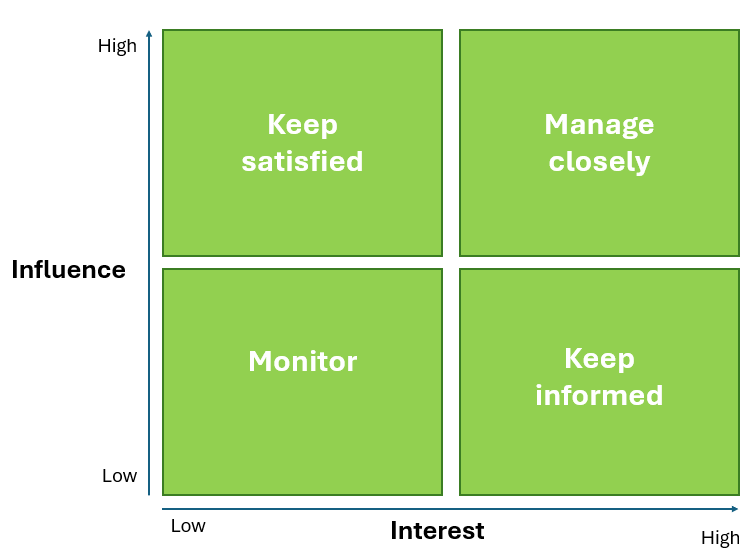Joelle Small
Read all my blogsAs a customer experience consultant, you sometimes get to join a project that is already ongoing and sometimes you are involved right at the start of a new project. Whatever scenario applies or which role you have, to make informed and evidence-based decisions, it is important to have a good understanding of the business processes. However, performing activities to have a clear understanding takes time, which is not always available. That is why it can be useful to find a way to quickly onboard to a project.
Various methods and techniques can be applied to perform a business analysis. Depending on the context, you often determine which technique best contributes to understanding the business.
In this blog, I will share a few techniques that I use frequently to gain a comprehensive and holistic understanding of a project or process. These techniques are related to the following skills: process analysis, stakeholder management and requirement analysis.
1. Process Analysis
Goal – Process analysis helps you to better understand business processes and evaluate them for efficiency and effectiveness.
Value – With process analysis you can identify bottlenecks in the process and opportunities to create more value.
Techniques – Some of the models or tools that I use:
- Ishikawa- diagram: this is a cause-and-effect diagram.

Ishikawa-diagram The diagram clearly shows potential causes of problems that may arise or that are already there. The header of the diagram resembles a fishbone and indicates the problem of a project. The lines branch out high-over categories of causes. This is your input for next activities to get more details from stakeholders.
- SIPOC – analysis model: this diagram can be used to define your process based on supplier, input, process, output, and customer. The model visualizes the complete process from begin to end in the start of a project. Each step can be completed with additional information.
- Value stream mapping: this model helps evaluating the efficiency of the business process. It points out where repeatable steps or multiple handoffs are. If you want to know more about this model , then you should read my previous blog about: Value Stream Mapping.
2. Stakeholder Management
Goal – Stakeholder management helps you to understand who your stakeholders are, how to approach them and what is exactly needed from (and for) all stakeholders.
Value – With stakeholder management you perform activities to understand who the stakeholders are, the impact of changes on them, and the influence they may have on the change and/or the satisfaction by a solution.
Techniques – Some of the models or tools that I use:
- Organizational modelling: this model helps to understand and visualize the framework of the organizations. This can give insight in the structure of departments or networks needed to achieve a goal or fulfil a function.

Stakeholder Mapping model Additionally, organizational modelling is used to understand roles, responsibilities and reporting functions in an organization.
- Stakeholder mapping: this model helps to identify all the stakeholders involved in the project. This includes internal stakeholders such as employees and external stakeholders such as customers, suppliers, and partners. Once all stakeholders are identified, it’s important to understand their interests and level of influence. When you update this map frequently, you can use the input for effective communication, nurturing relationships and improve collaboration.
3. Requirement Analysis
Goal – Requirement management helps you to determine the needs and expectations of a new product or system. Requirements focus on understanding what kind of value could be delivered when fulfilled.
Value – With requirement management you ensure that completed deliverables meet the expectations of the stakeholders.
Techniques – Some of the models or tools that I use:
- Requirement Management Process: this technique involves five activities: (1) Collection, investigate and gather the needs. (2) Analysis, align requirements with business goals. (3) Definition, document requirements. (4) Prioritization, order based on need and planning. (5) Validation & maintenance, track process and schedule maintenance. With this model you have a structured approach to determine the needs of a project.

Requirement Management Process
- User Stories and acceptance criteria: this technique helps to specify and verify the requirements. Based on these requirements you can create user stories. A user story is a short, simple description of an end-user’s need. It describes the context of what is needed and what value it brings. From this context you can derive acceptance criteria which functions as the conditions of a solution. These acceptance criteria can be described by functionality, usability, reliability, performance, supportability and security.
- MoSCoW method: this method allows you to prioritize requirements. Prioritizing requirements is mainly about which requirements will provide the most added value for the business. MoSCoW stands for (1) Must-haves: the minimum viable product, (2) Should-haves: additional and highly desirable requirements, but not a necessity, (3) Could-haves: nice to have when there are enough resources and (4) Won’t-haves: things that are explicitly mentioned that are out of scope.
The above-mentioned models and techniques can be used to capture information and analyse processes high-over. When needed, you can complement the models with details during the project phases.
To me, it is very useful to visualize the information that I have captured, so that I:
- Have insight in information gaps.
- Have an overview of changing dynamics.
- Have a way to make quick and informed decisions.
- Have a structured approach to gather process information.
In this blog, I shared my frequently used techniques for business analysis. When you are inspired by this topic, then you should also read our other blogs about business analysis.
If you want to share your thoughts, then let’s get in touch!


